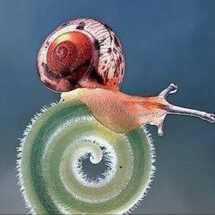Aug 12, 2022
Hamster infestation with cercariae
This protocol is a draft, published without a DOI.
- 1Texas Biomedical Research Institute

Protocol Citation: Frédéric D. Chevalier 2022. Hamster infestation with cercariae. protocols.io https://protocols.io/view/hamster-infestation-with-cercariae-ce7athie
License: This is an open access protocol distributed under the terms of the Creative Commons Attribution License, which permits unrestricted use, distribution, and reproduction in any medium, provided the original author and source are credited
Protocol status: Working
This protocol has been used routinely in our laboratory for 10 years.
Created: August 12, 2022
Last Modified: August 12, 2022
Protocol Integer ID: 68546
Keywords: Infection, rodents
Disclaimer
DISCLAIMER – FOR INFORMATIONAL PURPOSES ONLY; USE AT YOUR OWN RISK
The protocol content here is for informational purposes only and does not constitute legal, medical, clinical, or safety advice, or otherwise; content added to protocols.io is not peer reviewed and may not have undergone a formal approval of any kind. Information presented in this protocol should not substitute for independent professional judgment, advice, diagnosis, or treatment. Any action you take or refrain from taking using or relying upon the information presented here is strictly at your own risk. You agree that neither the Company nor any of the authors, contributors, administrators, or anyone else associated with protocols.io, can be held responsible for your use of the information contained in or linked to this protocol or any of our Sites/Apps and Services.
Abstract
This protocol describes the steps, materials and precautions needed for infecting hamsters with schistosome cercariae. Note that the use of vertebrates for research needs to be approved by the Institutional Animal Care and Use Committee (IACUC). Refer to your local IACUC for more information.
Materials
Glassware:
- Beakers
- Dishes
- Jar
- Pot
- Thinned pipettes
- Suckers
Solutions:
- Alcohol 70°
- TBRI water
Safety warnings
Use lab coat and gloves
Shed cercariae from snails during 2h under light in TBRI water
2h
Discard the shedding water in a new beaker
30m
Shed cercariae from snails again during 2h under light in new TBRI water
2h
Transfer the water in a new dish
1m
Get the hamster
15m
Wet the hamster in jar containing hot water (~30°C). BE CAREFUL to keep always the same individuals together (no mix from different cages)
10m
Take 1,000 cercariae with thinned pipette and depose them in the pot will receive the hamster
30m
Add water in the pot if necessary
2m
Put the hamster in the pot and label the pot correctly (note the number of the cage and the strain used for the infestation)
5m
Wait 2h minimum
2h
Put the hamster in the cage. BE CAREFUL to keep always the same individuals together (no mix from different cages)
15m
Wait until the hamsters were dried and go back to the animal room
Discard the biohazard materials in appropriate containers
30m
